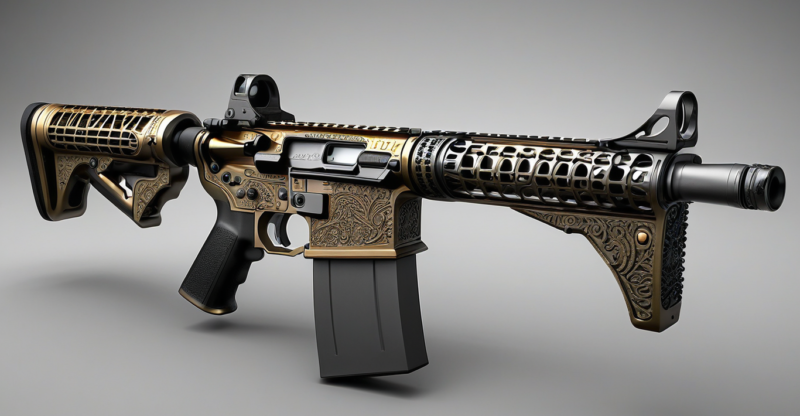The Most Important Items for Survival During Emergencies – Your Ultimate Guide
Are you prepared for the unexpected? Emergencies can strike at any time, leaving us scrambling for resources to stay safe and secure. One of the most crucial steps towards ensuring your survival and well-being during these challenging times is having a well-equipped emergency kit.
This guide will delve into the essential items that can make a significant difference when disaster strikes. From basic necessities such as food and water to advanced survival gear, we aim to equip you with the knowledge to face any emergency confidently.
Stay tuned as we unravel the must-have items for survival during emergencies, providing you with the tools to be prepared, stay safe, and thrive, no matter what life throws your way. This is not just a guide; consider it your survival blueprint for the unpredictable journey of life.
What is a survival kit?
A survival kit is a collection of essential items intended to aid survival in emergency situations. These kits are typically designed to support life for a specific period, such as 72 hours, which is the estimated time it generally takes for help to arrive after a disaster. A comprehensive survival kit should include necessities like food and water, or means to purify water, as hydration and nutrition are critical for survival.
In addition to sustenance, a survival kit should contain a first aid kit for treating injuries. This could include bandages, antiseptic wipes, tweezers, medical tape, and painkillers. It’s also vital to have tools for creating shelter and warmth, such as a space blanket and a waterproof tarp.
Survival kits also often include tools for navigation and signaling for help. A compass and maps can guide you to safety, while a whistle or mirror can signal your location to rescuers.
Light sources, like flashlights and glow sticks, are also important, especially in situations where power is unavailable.
Finally, a survival kit should include a multi-tool, which can serve multiple purposes, from opening cans to cutting ropes.
Remember, a survival kit is only as good as its contents, so it’s important to tailor it to your specific needs and potential emergencies you may encounter.
Why is water important during emergencies?
Water is a fundamental necessity for survival, especially during emergencies. It serves as the cornerstone for maintaining life and health. The human body can only last a few days without water, making it a top priority in any emergency survival kit.
Water’s role in hydration is crucial. When an emergency strikes, physical exertion often increases due to necessary activities like evacuation, rescue efforts, or even just maintaining daily life without power or other utilities. This extra physical activity increases the body’s demand for water.
Additionally, water is vital for sanitation purposes. Clean water is needed for washing hands and preventing the spread of diseases, which can be rampant during emergencies.
In adverse situations, finding a reliable source of clean water can be challenging. Therefore, emergency preparedness should always include strategies for water purification. This could involve boiling water, using purification tablets, or having a life straw at hand.
Lastly, water can also be used for cooking and preparing emergency food supplies. Dehydrated food, a common component of survival kits, requires water for preparation.
Remember, the importance of water during emergencies cannot be overstated. It’s not just about quenching thirst but maintaining overall health, hygiene, and well-being during stressful times.
How can a first-aid kit help in survival?
A first-aid kit is a crucial item for survival during emergencies, acting as a primary line of defense against potential health threats. It contains essential supplies like bandages, antiseptics, and pain relievers that can treat minor injuries, prevent infections, and manage pain. In situations where immediate medical attention is not available, a first-aid kit can make a significant difference.
First-aid kits are compact, making them easy to carry during evacuation scenarios. They can address a wide range of medical issues, from cuts and burns to sprains and strains. Moreover, they often include tools like tweezers and safety pins, useful for removing splinters or securing bandages.
• Quick response: First-aid kits allow for immediate response to injuries, reducing the risk of complications and speeding up the healing process.
In extreme survival situations, a first-aid kit can even be used creatively. For example, duct tape can serve as a makeshift splint, and a clean bandage can be used to filter water.
Remember, a first-aid kit is only as effective as the person using it. Therefore, basic first aid knowledge is essential. Regularly checking and restocking your first-aid kit ensures that you are always prepared for any emergency situation.
In conclusion, a first-aid kit is an indispensable survival tool during emergencies, providing immediate and effective care when it matters most.
Why are non-perishable foods necessary?
In the face of emergencies, non-perishable foods are a critical component of survival. They have a long shelf life, making them ideal for storing in emergency preparedness kits. These foods do not require refrigeration, cooking, or special preparation, making them a convenient source of nutrition in situations where resources may be limited.
Non-perishable foods like canned goods, dried fruits, and nuts are rich in essential nutrients, providing the body with the energy it needs to withstand stressful situations. They are also lightweight and easy to carry, making them practical for scenarios requiring evacuation.
Furthermore, non-perishable foods ensure food security during prolonged periods of crisis, such as natural disasters or power outages. They serve as a reliable source of sustenance when fresh food is not readily available or safe to consume.
- Non-perishable foods are essential for survival during emergencies due to their long shelf life and ease of preparation.
The importance of non-perishable foods in emergency preparedness cannot be overstated. They offer a practical solution for nourishment and survival during unexpected situations, making them a vital part of any emergency kit. In the event of a crisis, having non-perishable foods on hand can make the difference between life and death.
How can a flashlight aid survival?
A flashlight is an essential item in any survival kit, providing a reliable light source when darkness falls. It can be a game changer in emergency situations, illuminating your surroundings and helping you navigate through unfamiliar terrain. A flashlight can also be used to signal for help if you’re stranded or lost, making it a crucial tool for communication in dire situations.
In addition, a flashlight can serve as a defensive tool. The intense light can temporarily blind potential threats, providing you with a window of opportunity to escape. Furthermore, some flashlights are built with sturdy materials that can be used as a makeshift weapon if needed.
A flashlight can also be useful in performing first aid. In low light conditions, it can provide the necessary illumination to treat wounds, helping to prevent infection and other complications.
Lastly, a flashlight can help in fire starting. By focusing the beam on a small area, you can use it to ignite tinder and start a fire. This can be vital for warmth, cooking, and signaling for help.
In conclusion, a flashlight is a versatile tool that can greatly enhance your chances of survival during emergencies. It serves multiple functions, from providing light and signaling for help to assisting in first aid and fire starting.
Why should I have a whistle during emergencies?
A whistle is an often overlooked yet essential item for survival during emergencies. Its primary function is to signal for help, especially when voice communication may become impossible due to injury or extreme conditions. The piercing sound of a whistle can reach far distances, increasing your chances of being located by rescuers.
A whistle is also lightweight and compact, making it an easy addition to any survival kit. It doesn’t require batteries or electricity to function, ensuring its reliability in various situations.
Moreover, a whistle can be used to scare away wild animals, adding an extra layer of safety during wilderness emergencies. It can also be used to communicate with others in your group without attracting unwanted attention.
Here are three types of whistles suitable for emergency situations:
1. Pealess Whistles: These are designed to work in extreme conditions, including underwater or in freezing temperatures.
2. Storm Whistles: Known as the loudest whistles in the world, they can be heard over natural disasters’ noise.
3. Multi-functional Whistles: These come with added features like compasses, thermometers, or fire starters, providing more survival tools in one compact device.
Remember, a whistle is a simple yet powerful tool in any emergency situation. It’s a small addition to your kit that could potentially save your life.
What is the use of a multi-tool?
A multi-tool is a compact, handheld device that combines various essential tools into one. It is widely recognized as one of the most important items for survival during emergencies. In a survival scenario, a multi-tool can serve a multitude of purposes.
Firstly, it can be used for cutting or sawing through materials. This can be crucial when you need to make a fire for warmth, cook food, or create a makeshift shelter. Additionally, the screwdriver components can aid in repairing or dismantling items, while the can opener can be invaluable when canned food is the only available sustenance.
Secondly, a multi-tool often includes a pair of pliers, which can be used for a variety of tasks such as pulling out thorns or splinters, bending metal, or even as a makeshift wrench.
Finally, many multi-tools also feature a knife, which is essential for self-defense and hunting. It’s worth noting that the value of a multi-tool extends beyond survival situations. It’s a practical tool for everyday use, especially for those who enjoy outdoor activities such as camping, hiking, or fishing.
The versatility and compact nature of a multi-tool make it a must-have item in any emergency preparedness kit. Its numerous uses underscore its importance in survival situations, and it is a tool that should not be overlooked when preparing for potential emergencies.
How can a local map help during emergencies?
In the face of emergencies, a local map emerges as an indispensable survival item. A tangible, reliable source of navigational information, it can guide you to safety when digital devices fail. Understanding your surroundings is vital during crises, and a local map provides this crucial knowledge.
A local map can pinpoint the locations of essential resources such as fresh water sources, shelters, and medical facilities. In the absence of GPS, it can guide you towards these life-saving amenities. Moreover, it can help you avoid hazardous zones or areas of potential danger.
In emergencies, roads may be blocked or unsafe. A local map can help you identify alternative routes, ensuring your safe passage. It also aids in creating an effective evacuation plan, a crucial element in emergency preparedness.
Orientation is another key benefit of a local map. It can prevent disorientation, a common problem during emergencies, and maintain your sense of direction.
• Finally, a local map can serve as a valuable tool for communication. It can be used to explain your location to rescuers or to coordinate with other survivors.
In essence, a local map is more than just a piece of paper; it’s a vital tool for survival, providing invaluable assistance during emergencies.
Wrapping Up: The Essentials of Emergency Survival
In conclusion, being well-prepared for any emergency situation is crucial, and understanding the significance of having the most important items for survival can make all the difference. A survival kit is your lifeline in such scenarios, containing essential items that could potentially save your life.
Water, for instance, is critical for survival, not just for hydration but also for maintaining hygiene. Similarly, a first-aid kit is indispensable for treating injuries and preventing infections. Non-perishable foods provide the necessary sustenance when fresh food is unavailable.
A flashlight serves multiple purposes, from navigating in the dark to signalling for help. A whistle, too, is a valuable tool for drawing attention in case of emergencies. A multi-tool, with its numerous functionalities, can aid in various tasks, while a local map can guide you to safety.
As we move forward, it’s essential to stay updated with advancements in survival gear and emergency preparedness techniques. Remember, knowledge is power, and understanding how to use these items effectively is as important as having them. So, equip yourself with the right tools and the right knowledge, because when it comes to survival during emergencies, every second counts.









